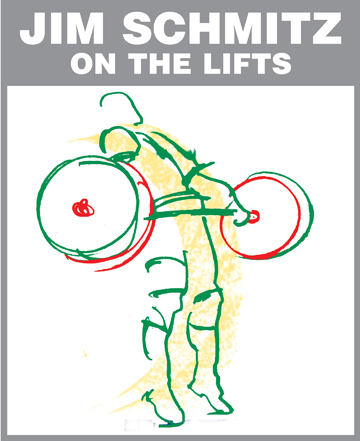
U.S. Olympic Weightlifting Team Coach 1980, 1988 & 1992
Author of Olympic-style Weightlifting for Beginner & Intermediate Weightlifters Manual and DVD
At the 2011 World Weightlifting Championships held in Paris, France, November 5–13, I noticed a lot of the lifters, both men and women, were widening their grips after the clean and before the jerk. In other words, they would clean the weight with a shoulder-width or slightly wider grip; they would then widen their grips anywhere from about an inch to several inches before jerking. Some lifters had such a wide grip it almost looked like a snatch grip. This was the case for primarily the split jerkers, but some power jerkers and squat jerkers did it also.
I didn't go back and count how many lifters widened their grip, but I'm sure this was the most I've seen at a world championships. This widening-of-the-grip jerk technique goes back to the 1980s when some Bulgarians were doing it, but I can't remember who or when right now. I think I remember some Cuban lifters also doing it in the late 1980s. I really remember taking notice when a Columbian lifter, 75-kg class Alvaro Velasco, was doing it in 1992 and that is also when Columbia had a Bulgarian coach. Over the last 20 years or so, more and more lifters have adapted this technique. It seems this technique started in Bulgaria and spread to Latin America and has now become used worldwide.
Why widen your grip for the jerk? It depends on the lifter, but there are several reasons. Number one is anatomical, where the person's forearms or arms are too long and he can't maintain a comfortable, secure position with the bar on his deltoids and clavicles; by moving the grip out he can get the bar in a solid position in which to drive it overhead using his legs, hips, and trunk. Some lifters who have this problem will even lose their grip entirely on the clean and will have to toss the bar up and re-grip it with the wider grip. A second reason for the wider grip is that some lifters have an elbow lockout problem with the shoulder-width grip, but by widening it they are able to have a solid lockout of the elbows. Third, some lifters have shoulder flexibility problems and are restricted in getting the barbell back over their head, so by widening their grip they are able to drive the bar up and bring their head through. Finally, some people think that with the wider grip you don't have to drive the bar as high.
There are two distinct techniques for widening one's grip; actually, three if you count beginning your clean with a wider grip. The most common technique is after standing up from the clean, you toss the bar up off your shoulders and move your grip out at the same time. The other technique is with the bar resting on your deltoids and clavicles, you slide your hands out to where you want them. Whatever method of widening your grip, you must practice a lot so that you adjust your grip to the exact place you want it every time. I have seen championships, medals, and lifts missed because the lifter's grip was uneven or too wide or narrow, so you really need to practice and practice. I don't teach or coach weightlifting by having a lifter watch himself in a mirror, but this might be a time where a mirror could be beneficial for showing you exactly where your hands should be.
The width of one's grip for overhead lifting is really a personal thing, because we all have different bodies that move differently. Just because your favorite lifter has a shoulder-width grip or a very wide grip doesn't mean that it is right for you; you have to experiment and practice a lot to find out which is best for you. The benefit of the shoulder-width grip is that you can drive the bar straight up using your arms at the beginning, and when the bar is overhead, your skeleton is aligned bone on bone; but then you have to drive it a little higher, and the narrower grip isn't as stable overhead. With the wider grip you can't use your arms as much initially, but they can finish stronger and faster. However, if you go too wide you lose the skeletal bone-on-bone advantage provided by a closer grip. Generally what happens if your grip is too narrow is that you will consistently be jerking too much in front; if your grip is too wide you will be putting the bar too much behind you.
You can see the value and importance of the precise grip for the jerk as well as the clean and the snatch, too. I try to attend all the press conferences at the Worlds and Olympics, and if a lifter has a unique or unusual technique I will ask him why he does it that way. The answer is always the same—through practice and trying all the different techniques, the coach and the athlete determine what gives the best results, even if it looks unorthodox. When I teach weightlifting I always teach textbook technique, but I accept what I can get as no two bodies are alike.












